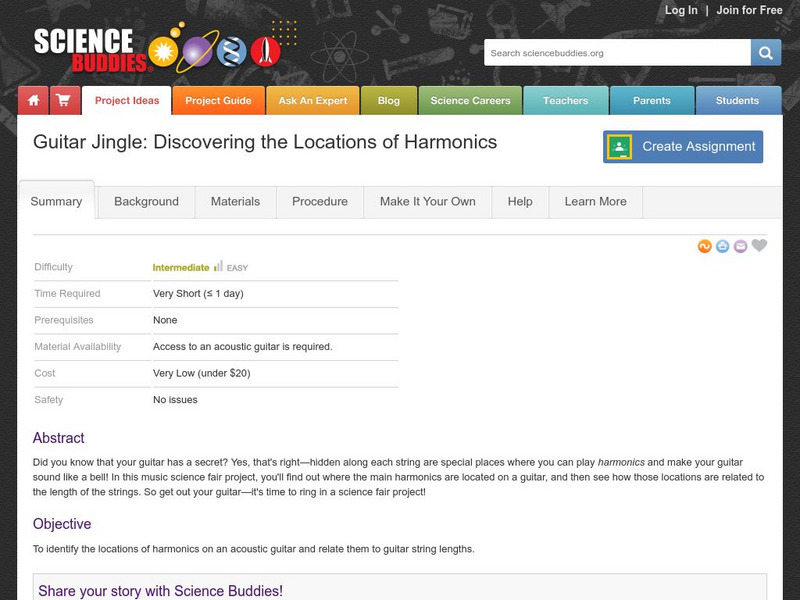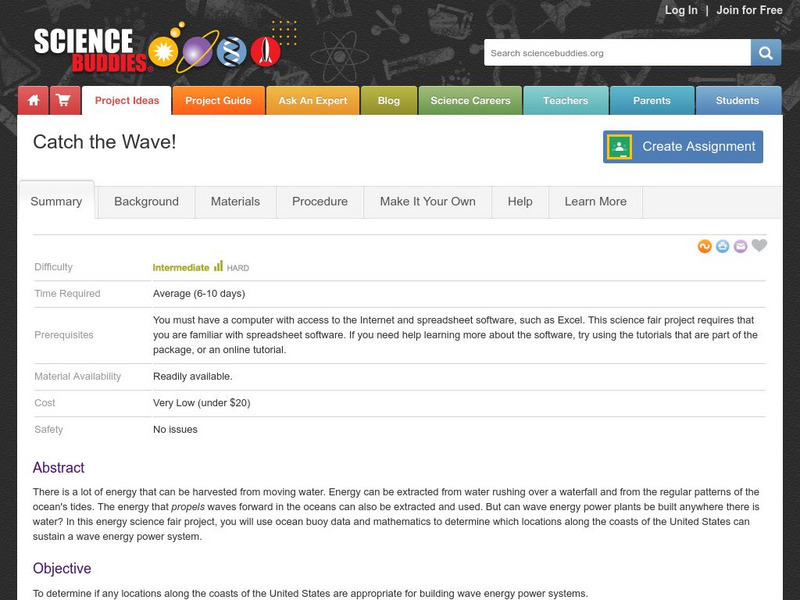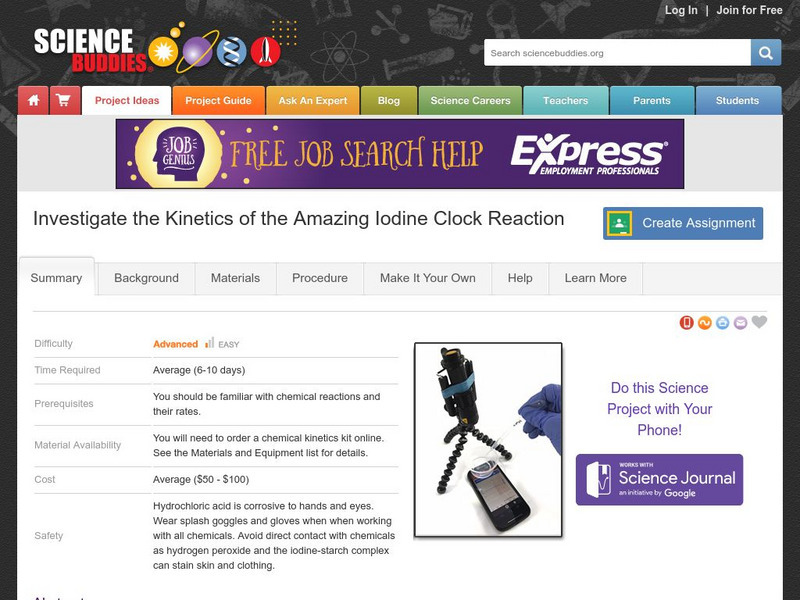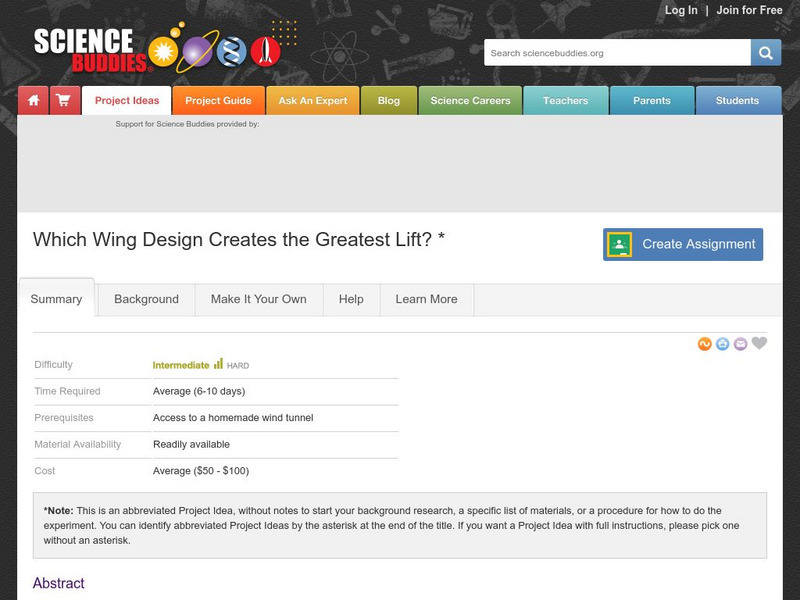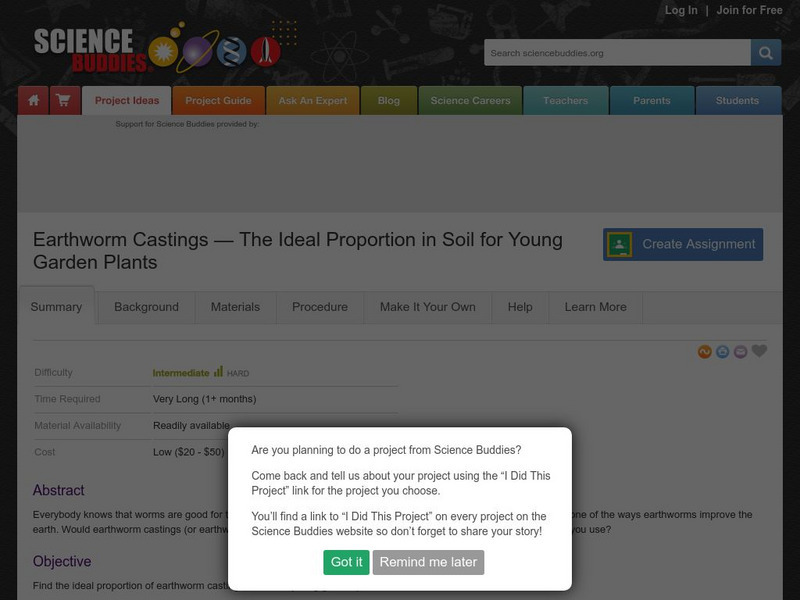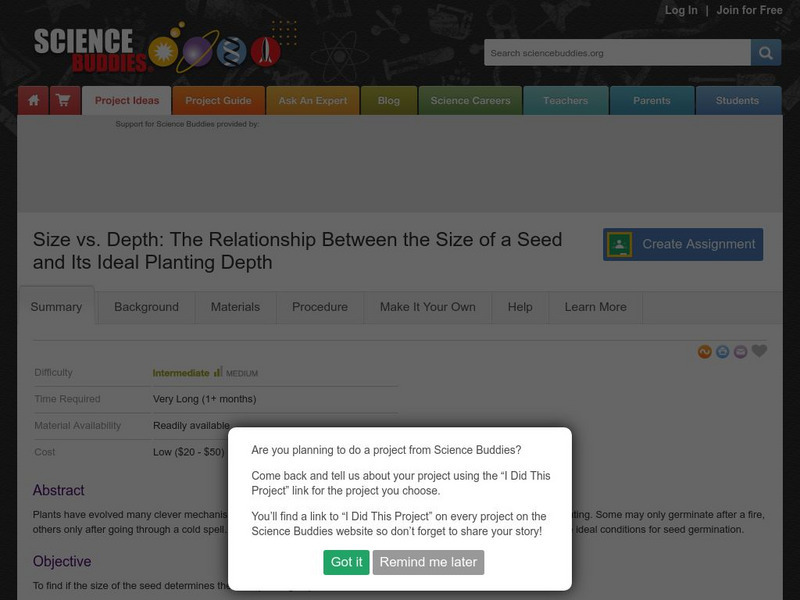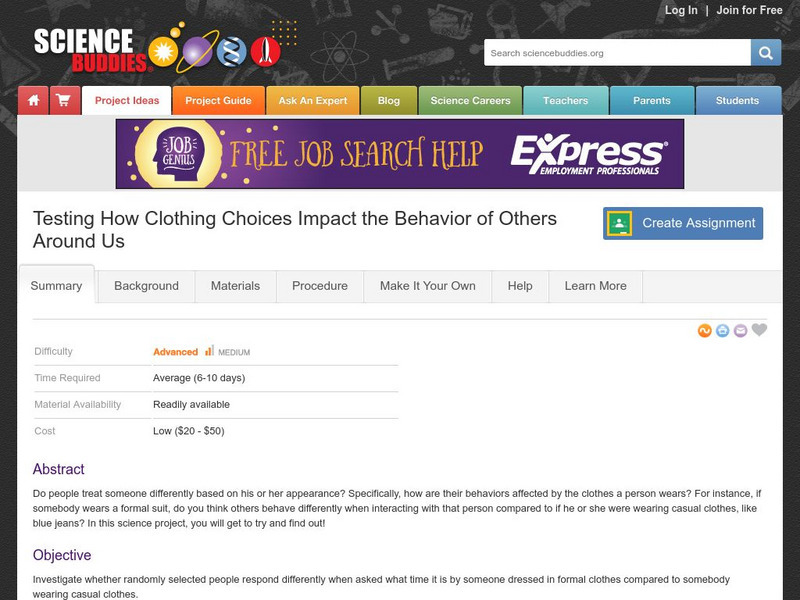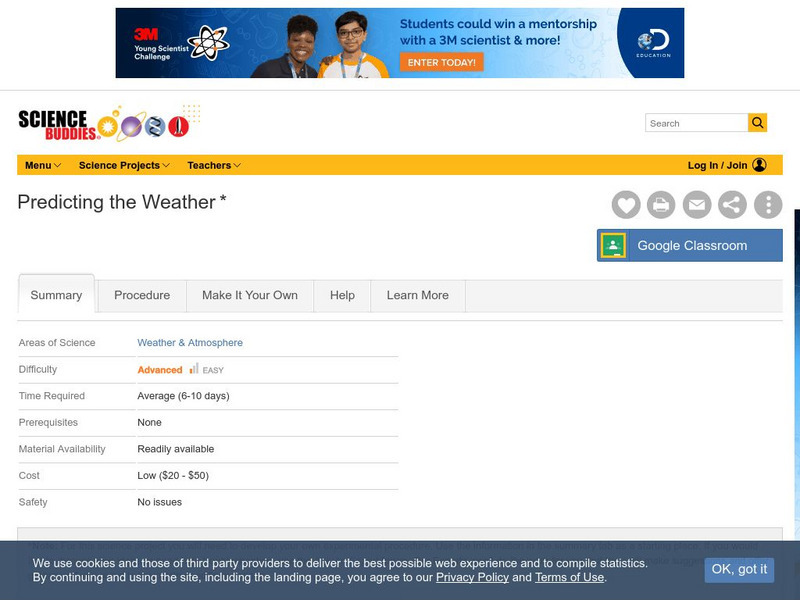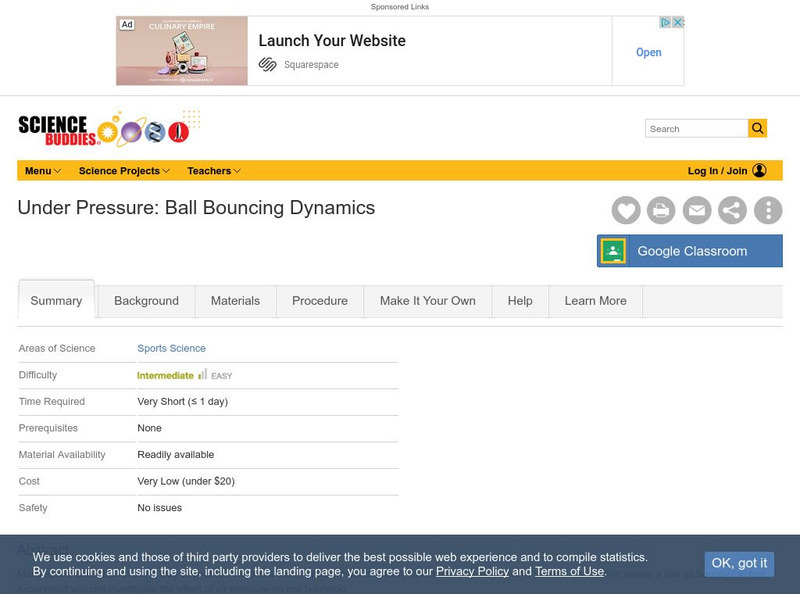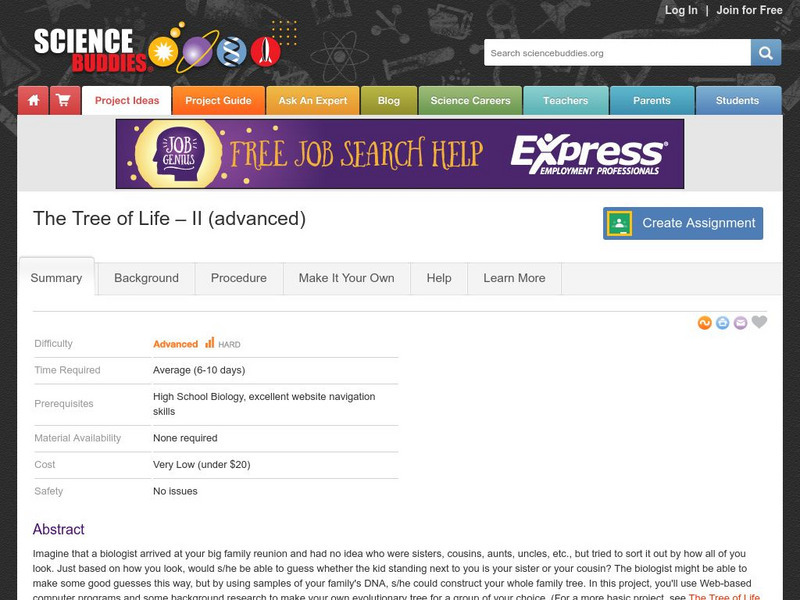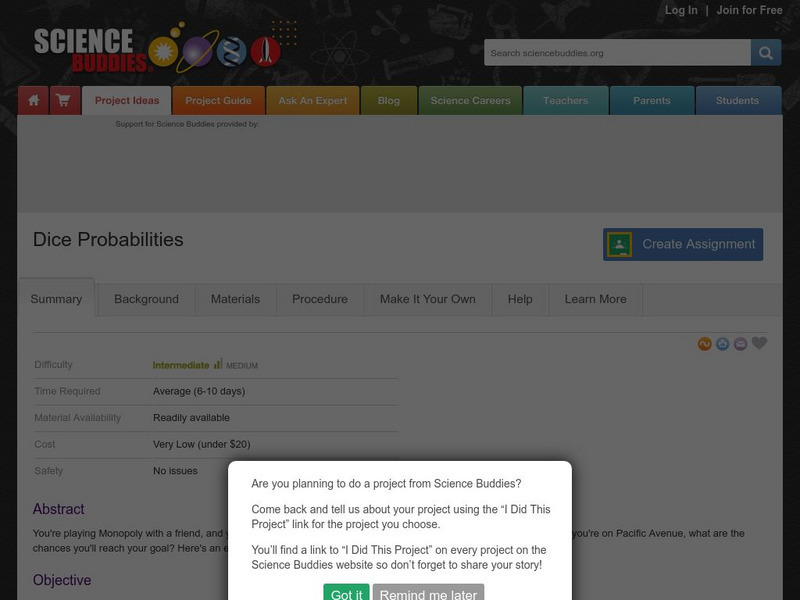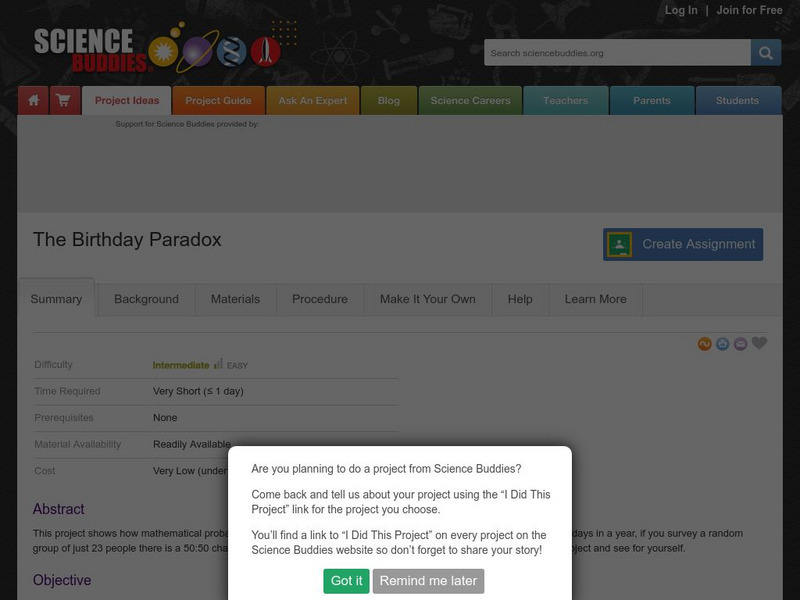Science Buddies
Science Buddies: Guitar Jingle: Discovering the Locations of Harmonics
In this music science fair project, students will discover the locations of harmonics on an acoustic guitar and relate them to guitar string lengths.
Science Buddies
Science Buddies: Bioluminescence: Investigating Glow in the Dark Dinoflagellates
Biotechnology science fair project to investigate the bioluminescence of dinoflagellates.
Science Buddies
Science Buddies: Catch the Wave!
In this energy science fair project, the student will use ocean buoy data to determine if any locations along the coasts of the United States are appropriate for building wave energy power systems.
Science Buddies
Science Buddies: Tee Time: How Fast Is Your Golf Swing?
Determine how golf club head velocity affects shot distance. Make your next trip to the driving range educational by conducting this experiment.
Science Buddies
Science Buddies: Investigate the Kinetics of the Amazing Iodine Clock Reaction
In this science fair project, investigate the chemical kinetics of the famous iodine clock reaction. This classic experiment requires about a week to complete.
Science Buddies
Science Buddies: Too Much of a Good Thing? Effects of Fertilizer on Algal Growth
Algae is a good thing, but too much is a bad thing. In this environmental science fair project, grow algae in several concentrations of fertilizer and observe its effect on algal growth.
Science Buddies
Science Buddies: Slimey Likes It! Studying Chemotaxis in Physarum Polycephalum
In this biology science fair project, test various amounts of glucose to see which ones attract and which repel (chemotaxis) growing Physarum polycephalum slime mold.
Science Buddies
Science Buddies: Model Rockets Aerodynamics: Stability
This science fair project for Science Buddies lets you be the rocket scientist. See how the rocket design changes its performance. The Science Buddies project ideas are set up consistently beginning with an abstract, objective, and...
Science Buddies
Science Buddies: Which Wing Design Creates the Greatest Lift?
Airplane wings do not all have the same design. With this Science Buddies project you can design your own wings to see which offers the greatest lift. The Science Buddies project ideas are set up consistently beginning with an abstract,...
Science Buddies
Science Buddies: Extracting Onion Dna
In this project, you'll learn how to isolate DNA from onion cells, separating it from other cellular components in a manner that still preserves its structure and sequence. In the end, you'll have enough DNA to see with the unaided eye,...
Science Buddies
Science Buddies: Yeast Reproduction in Sugar Substitutes
There's nothing quite like the smell of fresh-baked bread to make your mouth water. As any baker can tell you, you can't bake bread without yeast. This project makes clever use of bread dough to measure yeast reproduction three different...
Science Buddies
Science Buddies: Earthworm Castings: Soil for Young Garden Plants
Everybody knows that worms are good for the soil, but not everybody knows why. Here's a project that investigates just one of the ways earthworms improve the earth.
Science Buddies
Science Buddies: Cryopreservation: Freezing Plant Tissues
Cryopreservation-storing seeds in ultra-cold liquid nitrogen-is one method for maintaining plant genetic stocks in seed banks. The purpose of this project is to observe the characteristics and outcomes of cryogenically frozen seedlings...
Science Buddies
Science Buddies: Planting Size vs. Depth
Plants have evolved many clever mechanisms to ensure that their seeds will wait for appropriate conditions before sprouting. Some may only germinate after a fire, others only after going through a cold spell. This project explores one...
Science Buddies
Science Buddies: Testing How Fashion Impacts the Behavior of Others Around Us
There's an old saying that "the clothes make the man" (or woman, we're quick to add nowadays). How true do you think this is? Here's a project with one approach for finding out.
Science Buddies
Science Buddies: Are There Dangerous Levels of Lead in Local Soil?
The element lead is a neurotoxin that is particularly dangerous to young children. Among other uses, lead compounds were common paint additives until being phased out for safer titanium-based additives beginning in the 1960's. Lead...
Science Buddies
Science Buddies: Predicting the Weather
Here's a good way to get yourself on TV. This science fair project will help you learn how to predict the weather. So who knows, maybe you'll be more accurate than your local meteorologist.
Science Buddies
Science Buddies: Liquefaction & Seismic Activity
Earthquake damage can be intensified in areas that are subject to soil liquefaction. For example, in these areas, soil movement may cause foundations to collapse, while structures in nearby areas built on more stable soil or bedrock may...
Science Buddies
Science Buddies: Under Pressure: Ball Bouncing Dynamics
Many sports use a ball in some way or another. We throw them, dribble them, hit them, kick them, and they always bounce back. What makes a ball so bouncy? In this experiment you can investigate the effect of air pressure on ball bouncing.
Science Buddies
Science Buddies: The Tree of Life Ii (Advanced)
Imagine that a biologist arrived at your big family reunion and had no idea who were sisters, cousins, aunts, uncles, etc., but tried to sort it out by how all of you look. Just based on how you look, would s/he be able to guess whether...
Science Buddies
Science Buddies: Computational Exploration of Protein Function
The DNA in our cells contains our "blueprints," but it's the proteins in our cells that do most of the work. The Human Genome Project has allowed us to start reading the blueprints, but we still don't understand what most of the proteins...
Science Buddies
Science Buddies: Dice Probabilities
You're playing Monopoly with a friend, and you've already got Park Place and you really, really want to get Boardwalk. If you're on Pacific Avenue, what are the chances you'll reach your goal? Here's an easy project that will show you...
Science Buddies
Science Buddies: Solid Motor Rocket Propulsion
What does it take to launch a satellite to explore Mars, or a mission to the moon? This project has several possible variations for exploring the physics of rockets. This is rocket science.
Science Buddies
Science Buddies: The Birthday Paradox
This project shows how mathematical probability sometimes contradicts our intuition. Despite the fact that there are 365 days in a year, if you survey a random group of just 23 people there is a 50:50 chance that two of them will have...


